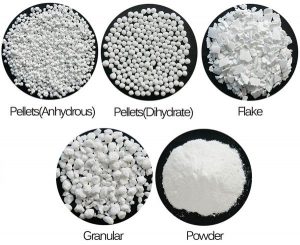What Are The Differences In Various Shapes Of Calcium Chloride?
Flake calcium chloride is made by steaming and concentrating liquid calcium chloride, cooling, crystallization, drying, and dehydrating. The process is labor-intensive, the product recovery rate is low, and the water content and impurities are high. The flake form is not conducive to packaging, or transportation. The advantages of calcium chloride flakes are that they provide a large flat surface area and stay put when applied. They can easily pass through various ice melt spreaders. Flakes are desirable when mixing with other dry products used to remove snow and ice, like salt, sand, or other abrasives. Typically, flakes are more cost-effective than pellets.
The shape of granular calcium chloride is close to the spherical shape, it has certain fluidity when used, and it is convenient to pack and transport. Therefore, it is widely welcomed by the market. Moreover, the market price is higher than flaked calcium chloride. In winter, the market demand is large and the supply is short. The production process of spherical calcium chloride mainly includes fluidized bed, high tower, and spray pelletizing. CaCl2 in granular form is used extensively in the pool industry as it boosts calcium hardness to prevent corrosion damage to shot and poured concrete pool surfaces. Its granular formula dissolves quickly when added directly to pool water. Granular anhydrous calcium chloride is also used as a desiccant; a drying agent and dehydrating agent. Granular calcium chloride in high-purity, the food-grade form is used in many food industries.
Powdered calcium chloride is prepared by spray drying. Dust will easily adhere to equipment, workshops, and personnel after absorbing water, which will endanger the normal operation of equipment and the health of personnel. In addition, powdered calcium chloride is highly hygroscopic and can easily absorb moisture in the air during use, and is corrosive. Calcium chloride in powder form is typically used as an additive in other processes, including as an accelerator in concrete to decrease set times in cold weather, and as a desiccant to scavenge moisture where it will absorb so much water that it will eventually dissolve into the water it attracts.
Calcium chloride pellets are spherical in shape and work very well with ice melt spreaders. The pellet or spherical shape provides performance benefits as their interface with ice and snow is more concentrated and allows them down under the icy surface, creating a brine underneath. This makes for easier mechanical clearing by helping to loosen the bond of ice to the surface that is being cleared.
